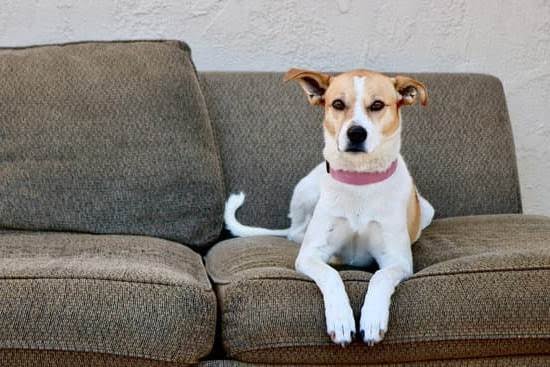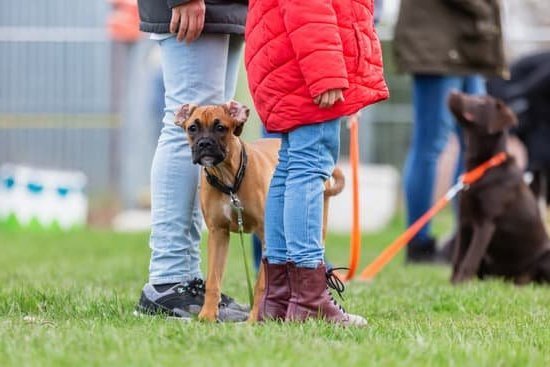Introduction
Training a dog to walk with you can be incredibly rewarding for both the pet and their owner. Not only does it provide an opportunity for exercise and bonding, but it also helps reinforce basic obedience training and encourages good behaviors. However, it is important to remember that handling an animal requires special care, patience and consistency from their handler. A few key steps are necessary in order to train a dog to walk alongside its human companion.
Step One: Ensure that your dog knows basic commands such as ‘stop’, ‘sit’, ‘stay’, etc., before attempting more advanced training such as walking with you. It is important to always maintain a calm and positive demeanor during this process and reward your pet with verbal praise or treats when they demonstrate good behavior.
Step Two: Use a short leash when teaching your pet how to walk properly beside you. Allow some slack in the leash while at the same time reinforcing the idea of keeping a consistent pace as well as staying on track. Keeping them close will also help prevent any dangerous scenarios from occurring such as chasing after other animals or being distracted by loud noises or other distractions.
Step Three: While out on walks try introducing distraction techniques in order to test how well your pup has been trained to stay focused. This could include walking near crowds of people or going off track in order to cross paths often ways. It may take several practice strolls until your pup can demonstrate proper discernment between what is acceptable behavior and what isn’t while out in public settings .
By following these steps, you will be well on your way towards having an obedient canine pal who knows how to walk alongside their human companion!
Tools Needed
Training a dog to walk with you requires consistent repetition, positive reinforcement and patience. The first step is to ensure that your dog has the right collar and leash – one that is not too heavy but also secure enough that it won’t slip off. It can be helpful to get a professional fitting if you’re able to. To begin training, walk around with your dog in small circles, keeping their attention on you at all times. Reassure the pup continually and click or say the word “yes” when they focus on you or take steps in the right direction. Treats should be used when teaching basic commands – like sit or stay – which will help reinforce good behaviour for your pup. Rewards such as toys can also be great ways of incentivising walking in the right direction – just make sure not to overfeed your pup in order to keep them healthy! Encourage good behaviour by praising and petting them when they’ve successfully walked with you throughout training sessions. Finally, establish a regular routine and always end walks on a positive note, so they look forward to spending time with you during these activities.
Fundamental Principles of Training a Dog
Positive reinforcement is an effective way to train a dog to walk with you. This involves giving your dog praise or treats when it follows a command. Doing so encourages the dog to repeat its action in the future as they learn that they will be rewarded every time they obey. It also helps them to bond with you and make them more likely to stay close by your side during walks.
When setting expectations for training your dog, start off small and set achievable goals. Depending on their age and temperament, try having them follow simple commands such as ‘sit’ or ‘come’. Over time, progress onto more complicated tasks like staying in heels or responding to hand signals. It’s important to let yourself have patience and work at the pace of your pup as you walk together.
In addition to training techniques, it’s essential for owners to understand their pet’s body language in order modify behavior appropriately and better communicate with them. By learning about behavioral cues like ear movements or tail wagging, understanding subtle changes in posture can be useful when instructing your pup through positive reinforcement. With sufficient practice and patience, these tips should help you train your canine companion!
Establish Initial Boundaries
Establishing boundaries is the first step in training a dog to walk with you. The best way to do this is by having a clear reward system, so your dog knows when they have done something good and will be rewarded for it. This could be done with verbal praise, treats, toys, or any combination of these rewards. It’s important to provide consistency and direction for the dog by repeating the same commands or cues and making sure they understand those signals. Additionally, exploring ways to foster trust between the owner and their pet is key in establishing the desired behavior. You can do this through playing games, giving attention and affection when desired, providing food and water regularly, taking your pet on regular walks, etc. The key here is to create an environment where both you and your dog feel comfortable and confident as you train each other how to behave properly while walking together.
Leash Training
Leash training is an important part of teaching a dog to walk correctly with you. For clear communication between you and your dog, the leash must be used properly. Start by introducing your dog to the leash calmly and positively, praising them when they become comfortable around it. Once they’re relaxed enough, put on the collar or harness, then connect the leash and let them explore while supervised.
To prevent a pulling dog, begin walking at a pace that your pup can keep up with and give verbal encouragement as they follow along. The goal is that your pup will learn to keep pace naturally without having to pull on the leash. If they do start pulling, respond appropriately — either stop in place or change direction suddenly — but don’t use negative corrections like tugging on the lead or shouting at them. As long as you stay consistent during leash training sessions, being patient and providing lots of positive reinforcement, your pup can learn how to walk alongside you quickly and effectively!
Teach Heel Command
To train your dog to heel, you must first understand when and why the heel command should be used. The heel command is best used in crowded areas or when walking near roads and traffic. Loose leash walking can occur when there is less distraction, such as on a nature trail.
Begin by luring your dog with treats to the side of your body nearest to the curb, rewarding them for getting into position. After several repetitions, give the verbal cue “heel” to initiate their heel position. Offer dogs extra rewards for maintaining a consistent heel position throughout the walk. If the dog pulls ahead or tries to wander away, stop moving and ask them back into position with a direct forward gaze and verbal cue.
Trainers may need to switch between different commands for different occasions, such as asking for a looser cue option at calmer points of their walk. This can be done by gently tugging on their leash when it is not tight and offering verbal praise as they come closer to your body after each tug of encouragement. Reward them with verbal praise each time they move their feet at your side so that they learn that staying at your side produces positive results!
Distractions
When training a dog to walk with you, distractions can be hard to manage. Firstly, teaching the “heel” command helps orient the dog to stay close and maintain focus when distractions arise. You should also teach the “sit” and “stay” commands to help keep your pup in control when these distractions occur. Reward-based reinforcement methods are highly effective when training a dog and providing positive motivation is key in keeping them focused even as other animals or passersby distract them. Setting tangible goals and rewards for sticking close will also help reinforce good behavior. For dogs that may be prone to barking at people or animals from excitement, start with simpler walks where no one else is around and gradually use more forgiving correction techniques such as providing verbal warnings before resorting to physical punishment or discipline. Also, giving your pup the opportunity to sniff familiar objects on walks can help reduce potential discomfort due to unknown noises, smells, or visual cues that appear unexpectedly. Finally, making sure all visitors give your pup plenty of loving attention will help remove their negative associations with strangers outside of the home.
Maintaining a Consistent Schedule
Make sure to establish a daily walking routine and stick to it. Doing so will demonstrate to your dog that walks are part of the daily schedule and provide predictability and consistency. On each walk, take a different path or explore a new area. Incorporate interesting scents, noises, and sights along the way. When introducing the walks for the first time, keep them short—about 10 minutes—so your pup can learn the basics before increasing their stamina over time. As you progress, introduce scheduled potty breaks throughout your walk to eliminate any surprises or accidents. Consistency is key when training your dog; it shows them that even though every day may look a little different, they can always find comfort in their consistent walking schedule.
Conclusion
Training a dog to walk with you is a simple but important process when it comes to having a well-behaved pet. It’s important to be patient while teaching your dog, as this will allow them time to learn and understand the task at hand. Owners can begin by providing their pup with verbal cues, such as ‘walk’ or ‘heel’, followed by positive reinforcement whenever they comply. Additionally, owners can incorporate fun activities during walks by introducing interactive toys into the exercise which will keep the dog entertained and motivated. This type of conditioning helps dogs stay focused on staying near their owners and prevent distraction from passing stimuli. Ultimately, having patience while training your pup to walk with you is key in building trust between pet and owner. Incorporating these fun activities can also make training more enjoyable for both parties!

Welcome to the blog! I am a professional dog trainer and have been working with dogs for many years. In this blog, I will be discussing various topics related to dog training, including tips, tricks, and advice. I hope you find this information helpful and informative. Thanks for reading!





